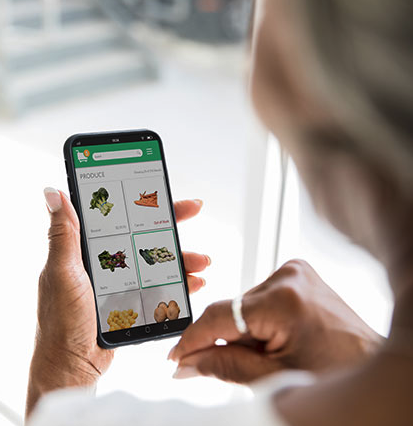••• real estate research
Homebuyer’s remorse
Many new homeowners have regrets but Millennials lead the pack
 With the current surging housing market, it’s not surprising that many buyers find they’ve closed on a house that doesn’t quite fit their budget or needs. According to a Bankrate.com article by Zach Wichter, this has been particularly true for Millennials, who report having the most regret after buying a home.
With the current surging housing market, it’s not surprising that many buyers find they’ve closed on a house that doesn’t quite fit their budget or needs. According to a Bankrate.com article by Zach Wichter, this has been particularly true for Millennials, who report having the most regret after buying a home.
Buyer’s remorse has become even more prevalent during the pandemic, when the pressure to buy a home has felt greater than before. That desperation has led to many buyers purchase a home before realizing it wasn’t right for them. This regret can be divided broadly into financial and physical and it isn’t the same across generations. For the most part, older buyers are less likely to have misgivings about their purchase after the fact. In fact, just 33% of Baby Boomer buyers have some regrets about their purchase compared to 64% of Millennials.
A major regret among all recent homebuyers was being ill-prepared for maintenance and other costs associated with homeownership. More than 20% of Millennial homeowners said they felt the costs of homeownership were too high and that number jumped to 26% among younger Millennials, ages 25-31.
Millennials were also the most likely to say they didn’t get a good mortgage rate or that they overpaid for property. Twelve percent of Millennials said their rates were too high and 13% said they agreed to a sale price that was more than it should have been.
While financial frustrations topped the list of regrets for new homebuyers, many survey respondents said they also came to realize their new place was literally not the right fit. Millennials again were the most likely to be unhappy with their new home’s physical characteristics. Fifteen percent of respondents from that generation said they disliked their new property’s location. Meanwhile, around 30% felt the home was not the right size.
The study was conducted by YouGov on behalf of Bankrate.com and polled 2,653 adults from April 21-23, 2021.
••• food research
Feeling fried
Americans are busier than ever, including in the kitchen
American are spending more time in their kitchens than ever but they’re also feeling increasingly overwhelmed by the day’s obligations. According to a Pampered Chef survey, 65% of Americans say they are in their kitchens even more than in years past, with that same amount reporting they also feel more overwhelmed every day or at least once or twice a week with everything they need to do. In fact, one in five say they will always make time to cook, even if it leads to feeling more overwhelmed.

Nearly 30% of respondents say they forget about cooking when they are overwhelmed. In the last half of 2020, 36% shared that they have been trying at least one new recipe each week and are loving it, while 64% expressed they have been looking for meal hacks, are reheating foods, have lost their joy in the kitchen or order takeout. On average, those who believe cooking has become an overwhelming challenge or chore have felt that way for nearly six months and significantly more females (25%) than males (8%) have felt that way for more than one year. Those with kids under the age of 18 appear to be struggling more in the kitchen and are twice as likely to say that cooking has become an overwhelming challenge and chore than those with older children.
While so many respondents feel burned out on their cooking duties, 80% of households have a primary cook, revealing that most families do not share the cooking responsibilities. Additionally, parents with children under the age of 18 will not typically share mealtime responsibilities (83%). Interestingly, only 5% will pass the cooking responsibility to somebody else when they are feeling overwhelmed.
Despite one person carrying the majority of cooking duties at home, only about four in 10 (37%) said they feel comfortable and confident in their cooking abilities. Six in 10 credit practice and repetition (60%) and having the right resources to complete a task (56%) for driving higher confidence. Self-expectations of being able to do more or better (44%) – which is stronger for females (48%) than males (41%) – along with too many responsibilities (37%) and lack of time (32%) are the biggest contributors to feeling less confident.
Half of the respondents report that a parent (34%) or someone else in their family (16%) primarily taught them to cook, while 16% might just be winging it, claiming that no one taught them how to cook. Interestingly, having a good role model to follow contributes to feeling more confident (33%) and at least 43% seek cooking inspiration from family recipes and traditions. People in the South are significantly more likely (one in four) to say they primarily learned how to cook from someone else in their family such as grandparents, aunts and uncles, than other regions of the country.
Ultimately, seven in 10 Americans report that providing a healthy, nutritious meal and having a meal while connecting with loved ones are the most enjoyable phases of mealtime. Only 16% shared that they enjoyed cleaning up the kitchen in comparison to other mealtime phases, with 42% saying it is their least enjoyable task. Yet many respondents (nearly 42%) were most likely to say a clean kitchen is a good reflection of themselves. Interestingly, 43% report that cleaning also falls by the wayside when they feel overwhelmed.
The survey was conducted by Bridge Market Research LLC on behalf of Pampered Chef in January 2021 with a sample of 1,001 Americans aged 25-54.
••• small business
Looking forward
Small businesses predict near-future recovery
 There’s no question that the past year has put small businesses through the wringer. But many businesses have adapted and are looking toward the future as vaccines and relaxed restrictions offer hope – and maybe even new jobs.
There’s no question that the past year has put small businesses through the wringer. But many businesses have adapted and are looking toward the future as vaccines and relaxed restrictions offer hope – and maybe even new jobs.
Sage surveyed small-business decision makers in the U.S., U.K. and France and found that three-quarters of small businesses are optimistic about the future of their business and growth trajectory in the next year. Optimism is mainly driven by the vaccine rollout program (45%), the return of in-person customer engagement (35%) and projections of increased consumer spending (32%). Over eight in 10 small businesses do not expect another lockdown, with most feeling optimistic that their business will return to pre-pandemic levels this summer – both in terms of profitability and staffing. In fact, 81% of small businesses across markets believe they will return to pre-pandemic profitability this summer. This confidence is led by the U.S. (82%), followed closely by the U.K. (79%).
An ability to adapt was critical during the pandemic. Many (60%) small businesses say that they have coped well with the barriers COVID-19 placed on them, making big changes to how they operate. Most commonly, in the U.S., 38% of small businesses said they cut overhead costs and, because of further financial barriers, 27% said they relied on their savings to make it through. This behavior was also reflected in the U.K., with 35% cutting overhead costs and 25% relying on savings. In France, the figure was 35% and 21%, respectively.
Small businesses turned to technology to overcome difficulties and create efficiencies within the business. In fact, 76% of small businesses say they rely on technology. In the U.S., 64% used new technology to sell more and stay connected with customers or improve how they operate. French small businesses used technology similarly to those in the U.S. (67%), while 52% of those in the U.K. also invested in new technologies, nearly all of whom said this increased investment improved their business.
Renewed optimism is driving hiring plans and as small businesses grow their workforce, they will continue to look at how they can increase diversity and prioritize employee well-being. One-third of small businesses are expected to hire in 2021, which could create millions of jobs. When applied to ONS data on employment from small businesses, this could mean 4.6 million more jobs in the U.S., 2.4 million in France and 1.2 million in the U.K.
Since the start of the pandemic, small businesses have been thinking more about their wider role in society, ranging from supporting employee well-being initiatives and environmental sustainability initiatives to prioritizing diversity in recruiting – with many small businesses expected to make further improvements in the upcoming year. Small businesses across the globe are increasing their focus on ways of working and employee wellness with 47% of small businesses in the U.S. improving flexible working, 37% of those in the U.K. increasing support for physical wellness and 34% of French small businesses modifying recruitment initiatives to prioritize diversity.
The study was conducted by Sage and polled small business decision makers in the U.S. (4,156), U.K. (2,144) and France (1,008).
••• automotive research
Driving home the message
Awareness is key for autonomous vehicle push
 The thought of an autonomous or self-driving vehicle is a somewhat scary concept. However, it’s also scary to share the road with irresponsible or distracted drivers. According to a recent poll by Ipsos, respondents say they encounter distracted drivers on 52% of their drives, though this number jumped to 62% among those who drive 25 miles or more a day. With autonomous cars increasing driver safety, vehicle owners in the U.S., China, Germany and Brazil remain steady in their interest in autonomous driving in 2021, with the most interest among consumers in China (78%), followed by Brazil (61%), Germany (34%) and the U.S. (31%).
The thought of an autonomous or self-driving vehicle is a somewhat scary concept. However, it’s also scary to share the road with irresponsible or distracted drivers. According to a recent poll by Ipsos, respondents say they encounter distracted drivers on 52% of their drives, though this number jumped to 62% among those who drive 25 miles or more a day. With autonomous cars increasing driver safety, vehicle owners in the U.S., China, Germany and Brazil remain steady in their interest in autonomous driving in 2021, with the most interest among consumers in China (78%), followed by Brazil (61%), Germany (34%) and the U.S. (31%).
Awareness is critical, however. The Ipsos Mobility Navigator study shows that Americans who have experience (riding or driving) using semi-autonomous features indicated a three-times increase in interest in getting a vehicle with an autonomous driving functionality. In the U.S., awareness or willingness to try a semi-autonomous car remains low but is gaining traction. While there is still a minority who have used semi-autonomous features, the key is to expand this exposure. Among vehicle owners who have driven or ridden in a semi-autonomous vehicle, 65% express interest in purchasing one themselves, compared to 23% who have no prior experience. The number of U.S. vehicle owners who have driven or ridden in a vehicle that uses semi-autonomous features is slowly creeping up – in 2021, this number is 19%, compared to 17% in 2020 and 11% in 2019.
Safety has always been an important factor in automotive decision-making but clearly that definition is changing and increasing in importance. Most accidents are human error and occur as a direct result of vehicles being operated by distracted drivers – and the number of potential distractions is only increasing.
A solution to this growing issue is highlighting semi-autonomous features and making consumers aware of the safety benefits they offer. This will directly correlate to demand and usage of the semi-autonomous functionality.
The survey was conducted by Ipsos and polled new vehicle owners aged 18-74 in the U.S. (2,000), China (1,000), Japan (1,000), Brazil (1,000) and Germany (1,000).
••• financial services
The age of crypto
In the UAE, young Emirati are driving interest for cryptocurrency
Despite the volatile history of cryptocurrencies, demand for these assets has remained high – especially in the United Arab Emirates (UAE). According to a YouGov and Holborn Assets survey of over 1,000 UAE residents, Emirati are particularly keen on investing in crypto with 33% expressing interest, more than Arab expats (23%), Asian residents (24%) and Westerners (19%).
One in four (26%) respondents view these assets as offering “exciting investment opportunities,” while 45% want more education before they invest. Eighteen percent view cryptocurrency as a passing fad and 11% say they need to be heavily regulated.
Reflecting this demand, 44% of the 830 respondents to a question on asset allocation said they would feel comfortable with over 5% of their investment portfolio invested in cryptocurrencies in 2021. This figure was over 10% for nearly one in five (18%) UAE residents.
The differences in survey responses across different sections of society in the UAE are particularly noteworthy. For instance, 18-to-24-year-olds are the most bullish on cryptocurrencies, with a third of respondents considering them to be “exciting investment opportunities,” compared with 17% in the 45+ age group. Meanwhile, only 10% of the youngest age group wants these assets to be heavily regulated, versus 17% for older investors. And while just 12% of young respondents consider crypto assets to be a fad, this rises to 20% among the 45-year-olds and above.
The interest in regulations differs across nationality as well, with only 7% of Emirati wanting crypto assets to be heavily regulated, compared with nearly one in four Western expats (24%). There is also a marked gap in comfort levels among UAE investors when buying crypto assets. A third of Emirati respondents, for instance, said a 5-10% allocation would suit them, with 19% opting for a 0-2% holding. For Western expats, by contrast, 51% of respondents said they would only allocate 0-2% to cryptocurrencies and just 14% would be comfortable with a 5-10% allocation.
The study was conducted by YouGov on behalf of Holborn Assets and polled 1,000 UAE residents.
••• shopper insights
A blended approach
Grocery shoppers love online but brick-and-mortar isn’t going anywhere
 The pandemic made many online grocery shoppers out of folks who had previously only shopped in stores and for some, time savings will motivate them to continue to shop online. However, the store is far from dead. In fact, consumers are increasingly favoring a blended store-online grocery shopping approach.
The pandemic made many online grocery shoppers out of folks who had previously only shopped in stores and for some, time savings will motivate them to continue to shop online. However, the store is far from dead. In fact, consumers are increasingly favoring a blended store-online grocery shopping approach.
PowerReviews conducted a study among grocery shoppers to better understand these trends and the factors that make shoppers favor one method over the other. Within the three months leading up to the survey, which was conducted in February and March 2021, 73% of consumers had purchased grocery items online compared to 17% in 2017, representing growth of 4.3 times. Looking at just the past year, 61% of consumers shop for groceries online more now than they did pre-COVID-19. But it’s not just the pandemic driving consumers online. The top reasons for online shopping include time savings (59%), personal safety (49%) and avoiding impulse purchases (31%). Shoppers still favor their usual stores, though – ordering directly from a local grocery store (as opposed to online-only ordering services such as Instacart or Amazon Fresh) is the most popular way to shop for groceries online, with 65% of consumers reporting they’ve purchased groceries this way.
As much as consumers appreciate online shopping, brick-and-mortar grocery is alive and well. Ninety-three percent of consumers had made an in-store grocery purchase within the most recent three months of being surveyed and 95% of consumers who shopped for groceries online have also made an in-store grocery purchase within the same time period.
Across online and in-store shopping, ratings and reviews positively impact the behavior of shoppers. Eighty-two percent of online grocery shoppers say they read reviews at least occasionally and 83% of consumers are at least somewhat interested in accessing product ratings and reviews when they’re considering a new product while shopping in a brick-and-mortar grocery store. Seventy-eight percent of online grocery shoppers are more likely to purchase a new grocery item if customer reviews exist for that product. The figure is 64% among in-store shoppers.
The study was conducted in February and March 2021 by PowerReviews and surveyed 7,916 active grocery shoppers across the U.S.
••• restaurant research
Digital dining
Canadians favor takeout and mobile payments at restaurants
Canadians’ return to restaurant dining will look a little different than it did before, according to a survey by Clover from Fiserv. With the pandemic pushing a shift to digital ordering at the table and delivery, many Canadians have grown to favor these options.

Among Gen Z and Millennial respondents, 57% said they’d prefer to order and pay at the table using their own mobile device rather than through a server. The younger generations are not alone, as more than one-third (35%) of those aged 35 to 54 said the same. In addition, 31% of 18-to-34-year-olds and 10% of 35-to-54-year-olds would be more likely to frequent a restaurant that offers this payment option.
The pandemic has also created a penchant for delivery. Prior to the pandemic half of Canadians (51%) ordered takeout or delivery one to two times every month. Since the start of the pandemic, about the same number of Canadians (52%) order takeout or delivery one to two times a week, more than quadrupling the frequency. And 11% order takeout or delivery three or more times every week, a figure that rises to 19% among 18-to-34-year-olds. This newfound habit might stick too. Nearly one-quarter (24%) of Canadians said they’ll choose takeout and delivery over in-person dining in 2021, even when restaurants reopen.
The survey was conducted by Maru/Blue on behalf of Clover from Fiserv and polled 1,507 Canadians in March 2021.
